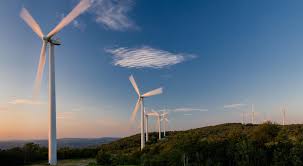Electricity costs in Australia are a hot topic — and not without reason. Depending on where you operate, the difference in energy pricing between regions can be substantial. Many businesses are left wondering: Who has the highest electricity prices in Australia? And more importantly — what can they do about it?
While headlines often point fingers at states or major retailers, the reality is more nuanced. Whether you’re running a café in South Australia or a warehouse in Victoria, understanding your pricing — and how to reduce it — often starts with one smart move: partnering with an experienced energy broker.
So, Who Has the Highest Electricity Prices in Australia?
According to Australian Energy Regulator (AER) data, South Australia consistently tops the charts for the highest average electricity prices, followed by New South Wales and Victoria. This is due to a mix of factors:
- Smaller and less competitive retail market in SA
- Higher reliance on imported energy during peak times
- Grid constraints and fewer low-cost baseload generators
- Price volatility linked to national wholesale market pressures
In contrast, Queensland and parts of regional WA tend to have more stable or subsidised pricing, though that doesn’t mean businesses there are immune to spikes or contract pitfalls.
Still, price by location is just the beginning. What really impacts your bill is how you buy your power — and that’s where a seasoned energy broker can make all the difference.
Energy Brokers: The Advantage Behind the Numbers
An energy broker doesn’t just help you compare quotes. They work on your behalf to:
- Assess your energy usage profile
- Compare real-time commercial offers
- Negotiate better rates or contract terms
- Match your usage pattern to the right tariff structure
- Handle switching between providers with minimal admin
In regions like South Australia or metro Sydney — where energy rates can climb fast — having someone who understands the market and your load profile can lead to thousands in annual savings.
See how different firms approach this by exploring this side-by-side energy broker comparison.
Why Your State’s “High Price” Might Not Apply to You
It’s easy to get spooked by reports of high electricity prices in your region. But the truth is, averages don’t tell the full story.
For example:
- A business in Adelaide with high overnight usage might access cheaper off-peak tariffs despite SA’s overall high pricing.
- A warehouse in NSW using power during solar-driven wholesale dips might benefit from market-linked pricing.
- A business in Victoria might be eligible for a multi-site discount or volume rebate from a smaller supplier.
An energy broker looks at your actual data — not just postcode averages — to build a strategy that reflects how you use energy.
Real-World Case: Franchise Cuts Costs in High-Price Zone
A retail franchise with five sites in South Australia assumed it had no choice but to absorb high power bills. Each store was on a separate contract with a major provider, all on standard business plans.
An energy broker analysed the usage across locations and found a pattern: peak loads were concentrated between 8am and 3pm. The broker sourced a retailer offering daytime solar-linked rates, and consolidated the contracts to access a usage volume discount.
End result? A 17% saving across all sites — despite operating in the “most expensive” state.
This is the kind of value that’s missed when businesses only look at surface-level pricing — or rely on comparison sites without deeper insights.
What Drives Electricity Prices Up?
Understanding the “why” behind high prices can help businesses manage them better. Some key drivers include:
- Wholesale volatility: Market-exposed contracts can fluctuate by up to 300% during high-demand periods.
- Network costs: Poles and wires charges differ between networks and make up a big chunk of your bill.
- Demand charges: Spikes in usage (even short ones) can result in high monthly charges.
- Contract timing: Signing a fixed-rate deal during a wholesale peak locks you into inflated prices.
A qualified energy broker keeps track of these variables and helps you act before they impact your bottom line.
Green Energy and High Prices: What’s the Connection?
Some high-cost plans are tied to green energy or carbon offset programs. While this can support sustainability goals, not all green-labelled plans offer clear value.
That’s where a broker can help:
- Compare GreenPower premiums
- Explain the difference between carbon-neutral vs 100% renewable
- Identify if your business qualifies for any state-based renewable rebates
- Recommend hybrid options that reduce costs without dropping ESG standards
For businesses required to report on emissions or sustainability targets, this balancing act is especially important.
Final Take: High Prices Are Inevitable — Overpaying Isn’t
Yes, electricity prices are higher in certain parts of Australia. But high prices don’t always mean high bills.
With smart planning, timing, and contract selection — often guided by a sharp energy broker — even businesses in the most expensive regions can reduce costs and avoid long-term exposure to price spikes.
Because at the end of the day, energy is more than just a line item. It’s one of the most controllable cost centres in your business — if you have the right advice.
So if you’re feeling stuck paying too much, it might be time to stop asking “who charges the most?” and start asking “who can help me pay less?”

